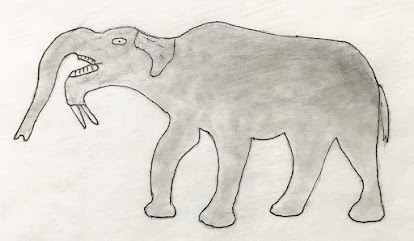The genus name Deinotherium is derived from Greek (deinos = means “terror” or “fear;” therium means “beast).”
Deinotheres lived only in the Old World (Africa, Europe, central Asia, and India) during the early Miocene to early Pleistocene. They did not reach North America. Their peak time was the late Miocene. Only four species are known of this genus. They were neither gomphotheres nor mastodons nor elephants. They represented their own family: Deinotheridae.
They reached a height of 13 feet at the shoulder (note: an African elephant is only 11.5 feet high at the shoulder). Deinotherium giganteum which was the largest species of Deinotherium. The living animal weighed an estimated 26,500 pounds). If you are ever in Bucharest, Romania, check out the Grigore Antipa Museum in order to see the Deinoithere giganteum skeleton on display. Images are displayed when you “Google” this name.The “fossil-guy.com website” also has several spectacular images of this particular skeleton.
Deinotherium giganteum
Deinotheres have large simple lophodont teeth. The upper jaw had no incisors. The lower jaw (mandibular jaw) had incisors but, unlike any other proboscideans, these incisors were downturned. Their cheek teeth were replaced in a vertical fashion, not horizontally as in elephants.
Deinotherium preferred forests rather than grasslands. As the latter became more and more widespread during the cooler times of the Pliocene and Pleistocene, deinotheres declined and eventually went extinct.

No comments:
Post a Comment